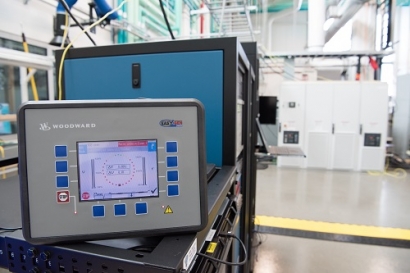
Moreover, the EPA identified transportation (29%), electricity generation (28%) and general industry (22%) as the three largest contributors to greenhouse gas emissions in 2017.
That means we need sweeping changes to the way we generate and distribute electricity. Renewables are cleaner and becoming cheaper than coal, and they are also paving the way for something even more important: smart electric microgrids.
Why Are Microgrids Necessary?
To continue scaling human civilization without rendering the planet uninhabitable, two things need to happen within the energy industry:
Solar power and wind are the two most productive renewable energy sources. However, they don’t cooperate consistently throughout the months and seasons.
Since we live in a digital world with several things competing for power, it’s clear renewables need an assist if they’re to power our world without blackouts. Some locations, like hospitals, have lives hanging in the balance.
In addition to generating power and feeding it into the energy grid using renewable means, we also need a maximally resilient system. It must ensure clean power gets where it’s needed immediately and feeds any excess electricity back into the system, and one of the most efficient ways to ensure power during an outage is through microgrids.
What Are Microgrids?
Recent super storms have proven the need for resilient power grids that can be restored to functionality quickly. Microgrids can help us design and build exactly that. An electric grid is any permutation of a power source, clients putting that power to work, wires to deliver it and a computer system to govern its behavior.
There are several reasons why the traditional grid no longer meets our needs or supports the sustainable use of energy. High-voltage transmission lines lose about 5% of their power just by transporting energy over a distance. That’s why the voltage is so high in the first place.
Microgrids also make power generation and distribution more local. Since they can contain just a single power source and client, they are eminently scalable. Their small footprint means they’re easy to bring back online after an outage.
Further Advantages of Microgrids
A 2016 report from Green Tech Media indicated that more than 1,900 microgrid projects were underway that year. There are plenty of reasons why.
"Off-grid” microgrids are standalone systems that help bring electricity to rural areas, regions that lack basic infrastructure and places whose infrastructure was catastrophically damaged. In Puerto Rico’s case, microgrids became an important part of getting re-electrified and building a system that can weather the next storm.
Microgrids can be thought of as individual clients within the larger power grid. This is a two-way street, though — and it brings us to the crux of the appeal of microgrids:
Most of the microgrids in the world today are quite basic. A hospital equipped with a diesel generator is a microgrid – it’s just not a very clean one. If the larger grid loses power, that hospital can remain self-sufficient until fuel runs out.
Microgrids scale that idea up. They also play well into the idea of solar and wind co-operatives, in which communities buy clean energy generation equipment together and sell their excess power back to the delivery companies. As storage battery technology matures and more batteries are attached to microgrids, they’ll become even more resilient and better able to withstand periods of high demand and low production.
Powering the Future
Microgrids represent a sort of democratization of the delivery of energy. Many microgrids today run on diesel or other incumbent fuels, meaning they aren’t practical for supporting everyday activities and are more appropriate for short-term emergencies. Expect further growth in microgrid projects as renewables become even more cost-effective to deploy.
Electrifying everything and making our energy portfolios diverse and clean are the big next steps before microgrids realize their potential. They’re already on their way to becoming the de facto way we generate and distribute energy.

